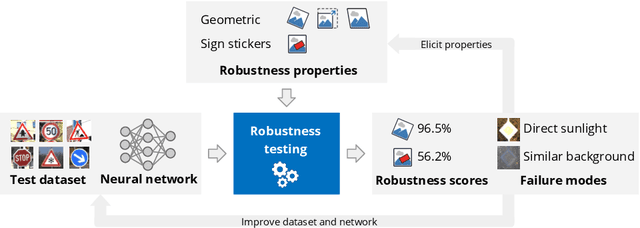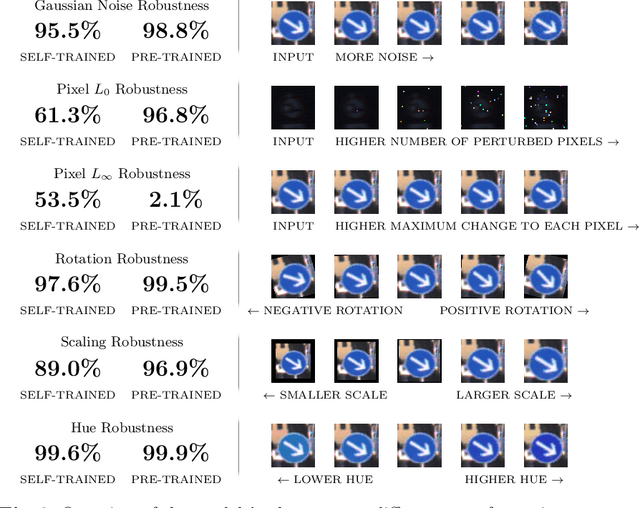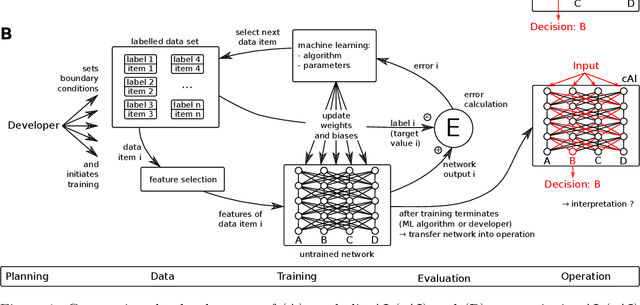Arndt von Twickel
Towards Audit Requirements for AI-based Systems in Mobility Applications
Feb 27, 2023Abstract:Various mobility applications like advanced driver assistance systems increasingly utilize artificial intelligence (AI) based functionalities. Typically, deep neural networks (DNNs) are used as these provide the best performance on the challenging perception, prediction or planning tasks that occur in real driving environments. However, current regulations like UNECE R 155 or ISO 26262 do not consider AI-related aspects and are only applied to traditional algorithm-based systems. The non-existence of AI-specific standards or norms prevents the practical application and can harm the trust level of users. Hence, it is important to extend existing standardization for security and safety to consider AI-specific challenges and requirements. To take a step towards a suitable regulation we propose 50 technical requirements or best practices that extend existing regulations and address the concrete needs for DNN-based systems. We show the applicability, usefulness and meaningfulness of the proposed requirements by performing an exemplary audit of a DNN-based traffic sign recognition system using three of the proposed requirements.
Robustness testing of AI systems: A case study for traffic sign recognition
Aug 13, 2021



Abstract:In the last years, AI systems, in particular neural networks, have seen a tremendous increase in performance, and they are now used in a broad range of applications. Unlike classical symbolic AI systems, neural networks are trained using large data sets and their inner structure containing possibly billions of parameters does not lend itself to human interpretation. As a consequence, it is so far not feasible to provide broad guarantees for the correct behaviour of neural networks during operation if they process input data that significantly differ from those seen during training. However, many applications of AI systems are security- or safety-critical, and hence require obtaining statements on the robustness of the systems when facing unexpected events, whether they occur naturally or are induced by an attacker in a targeted way. As a step towards developing robust AI systems for such applications, this paper presents how the robustness of AI systems can be practically examined and which methods and metrics can be used to do so. The robustness testing methodology is described and analysed for the example use case of traffic sign recognition in autonomous driving.
* 12 pages, 7 figures. The final publication is available at Springer via https://doi.org/10.1007/978-3-030-79150-6_21
Vulnerabilities of Connectionist AI Applications: Evaluation and Defence
Mar 18, 2020



Abstract:This article deals with the IT security of connectionist artificial intelligence (AI) applications, focusing on threats to integrity, one of the three IT security goals. Such threats are for instance most relevant in prominent AI computer vision applications. In order to present a holistic view on the IT security goal integrity, many additional aspects such as interpretability, robustness and documentation are taken into account. A comprehensive list of threats and possible mitigations is presented by reviewing the state-of-the-art literature. AI-specific vulnerabilities such as adversarial attacks and poisoning attacks as well as their AI-specific root causes are discussed in detail. Additionally and in contrast to former reviews, the whole AI supply chain is analysed with respect to vulnerabilities, including the planning, data acquisition, training, evaluation and operation phases. The discussion of mitigations is likewise not restricted to the level of the AI system itself but rather advocates viewing AI systems in the context of their supply chains and their embeddings in larger IT infrastructures and hardware devices. Based on this and the observation that adaptive attackers may circumvent any single published AI-specific defence to date, the article concludes that single protective measures are not sufficient but rather multiple measures on different levels have to be combined to achieve a minimum level of IT security for AI applications.
 Add to Chrome
Add to Chrome Add to Firefox
Add to Firefox Add to Edge
Add to Edge